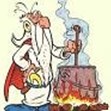Cooper: "The Truth of the Tape"
1 Mensagem
|Página 1 de 1
Cooper: "The Truth of the Tape"
"The Truth of the Tape"
Jeffrey Cooper
Dec 11, 2008 9:45 am
" Market only wrong at very top and very bottom.
All he believes are his eyes
And his eyes, they just tell him lies
-License To Kill (Dylan)
“Any fool can believe the truth; it takes a genius to believe a palpable lie.”
--Anon
The market is a genius. It's only wrong twice: At the very top and at the very bottom. Anybody can read the headlines and listen to the tube for the litany of the latest bad news: Layoffs, earnings downgrades, foreclosures, deficits, corruption. But Mr. Market, in his own inimitable way, is interested in only 3 things: The future, the future and the future. As much as the market may mimic the past, it is not concerned about the present other than in the most transitory of ways.
So the question is how can one read the market's tea leaves? How can one anticipate without becoming captive to a forecast? Most all indicators are descriptive rather than predicative. I am in the business of relying on the market's own behavior to reveal its agenda: the price action itself. Most all indicators are derived from price and volume so why not go right to the horse’s mouth and consult with price itself. Price is the final arbiter. Of course, then there is the Time Factor. But right now we are talking about price.
The art of reading the market requires interpretation. As geometric as it may be and as much as it has its own internal clock, reading the market is an art, not a science. Interpretation requires a knowledge of the past behavior while good judgment derives from experience. The best way I know of interpreting the behavior of the market is through my method of Swing Chart Theory and the Wheel of Time and Price.
Swing Chart Theory marries time and price. Within every market there is a primary trend and a secondary trend. These are the market's X and Y chromosomes that operate concurrently spiraling like a double helix carving out the supply and demand of emotion embedded in the tealeaves of time.
The trend consists of wheels within wheels. The wheels of the 10 minute make the hourlies, the hourlies make the daily, the daily makes the short term trend, the short term trend makes the secondary trend and the secondary trend makes the primary trend.
While the primary trend may still be down until multiple indices recapture their respective November 4th peaks, there are signs of accumulation not the least of which have been the number of gainers as to losing days in the last three weeks and the breadth and volume statistics which reflect some powerful accumulation.
The inflection point came on November 26th which was a “90% up day”. That session saw the S&P follow through to the upside after stabbing back up through the October lows after undercutting them in November. It is not happenstance that this week's consolidation in the S&P just below its 50 dma has seen multiple lows tested as the index backs and fills, holding at the highs of the November 26th high.
Previously I mentioned Swing Chart Theory. Basically, it is the study of the behavior of a stock or an index as the wheels of time turn. For example, on November 26th The Weekly Swing Chart turned back up. In bear trends when the swing chart turns back up, it typically defines a high quickly in terms of time and price.
Such was the case when the Weekly Swing Chart turned up in early November for the first time since the crash began in September. That turn up defined a high which led to a further plunge to new lows. There has been a change in behavior since the Weekly Swing Chart turned up on November 26th: the S&P is holding and extending gains.
Like a runner, the markets are a living breathing organism. They inhale and exhale. That is a good way to look at the behavior of the turn ups and turn downs in the various swing charts, be they daily, weekly, monthly, quarterly or yearly.
If the runner is still strong and has stamina within an uptrend for example, the inhale will supply the strength to push further ahead. If the runner inhales but falters, it is a sign of exhaustion and suggests lower prices. Gann used to say "key off the weekly charts to determine the trend for trading." You want to trade in the direction of the weekly trend.
The weekly has now traced out an Up Down Up Sequence and seems to be consolidating. The implication is that the Monthly Swing Chart is poised to turn up soon. I suspect that will occur in December on trade above the November 4th peak. If this occurs in multiple indices, i.e. in the DJIA and the Dow Transportation Index, it will suggest a change in trend. It will carve out a higher swing high after higher swing lows at the prior inflection point where the Weekly Swing Chart last turned up. I would study and reread the concept I have presented as it will tell you how to make friends with the trend. It will teach you how to fish for yourself rather than depend upon being given a fish. It will allow you to ignore the ‘opinions’ of others and the news and reveal to you the Truth of The Tape.
The fierceness of cyclical downward pressure appears to have subsided near mid November as anticipated. The sharp one day wonder rallies which are the hallmark of bear markets have given way to more backing and filling and grinding gradualism. You must get a lessening of the bearish trend before the bullish trend can emerge. The real test of the tape will come when the Monthly Swing Chart turns up.
Conclusion: Yesterday, the S&P scored an N/R 7 Volatility Day which simply means it was the narrowest range in 7 sessions. Price action expands and contracts, inhales and exhales, so after consolidating below its 50 day ma for two days on the side, I would expect volatility to pick up here before the weekend.
There are two suggested scenarios according to my interpretation of the short term picture. In my experience when a stock or an index consolidates below a key level--be that an old high or an important moving average or a trend line--it suggests that the stock or the index is mustering strength for an attack higher. Inversely, when a stock or index immediately spikes over one of the key levels as mentioned above it usually is destined to come right back in if not failure.
Be that as it may, the S&P may pull back from this consolidation once again prior to attacking the key 912 to 914 level which as you know is an important 540 degrees up from the 741 low. A break of 876 would imply a possible move down to 854. Above 900 and preferably only on a momentum breakout above 912/914 would the long side have a clear edge - otherwise we may get more chop or even drop.
Unless Thursday starts out with a clear momentum move to the upside I would be somewhat suspect as I was looking for the high of the week to be Wednesday and show some cyclic pressure due to be exerted into Friday.
Strategy: In last night's report I showed a 10 minute S&P chart for the week. It shows a 3 point declining trendline from this week’s high just above 914. A momentum move above this trend line ie above 902 that follows through and recaptures 914 in earnest should see a quick spike toward the 940 to 950 level I have previously offered.
Alternatively, a move down to 870 first, may pullback the rubber band before the run toward 950 occurs. An Angular Rule of 4 Breakout on the 10 minute chart--momentum move through 902--would be bullish but the alternative interpretation is a Power Surge lower from a third lower high on this short term picture. It is interesting that the cycle dates I have mentioned into mid December also more or less line up with the Winter Solstice which happens to be 30 degrees from the November 21st washout.
Basically it looks like a normal bullish consolidation below the 50 DMA but there may be a tug of war between the pattern and some further required liquidation that may come in December on a breakout toward 950. "
(in www.minyanville.com)
Jeffrey Cooper
Dec 11, 2008 9:45 am
" Market only wrong at very top and very bottom.
All he believes are his eyes
And his eyes, they just tell him lies
-License To Kill (Dylan)
“Any fool can believe the truth; it takes a genius to believe a palpable lie.”
--Anon
The market is a genius. It's only wrong twice: At the very top and at the very bottom. Anybody can read the headlines and listen to the tube for the litany of the latest bad news: Layoffs, earnings downgrades, foreclosures, deficits, corruption. But Mr. Market, in his own inimitable way, is interested in only 3 things: The future, the future and the future. As much as the market may mimic the past, it is not concerned about the present other than in the most transitory of ways.
So the question is how can one read the market's tea leaves? How can one anticipate without becoming captive to a forecast? Most all indicators are descriptive rather than predicative. I am in the business of relying on the market's own behavior to reveal its agenda: the price action itself. Most all indicators are derived from price and volume so why not go right to the horse’s mouth and consult with price itself. Price is the final arbiter. Of course, then there is the Time Factor. But right now we are talking about price.
The art of reading the market requires interpretation. As geometric as it may be and as much as it has its own internal clock, reading the market is an art, not a science. Interpretation requires a knowledge of the past behavior while good judgment derives from experience. The best way I know of interpreting the behavior of the market is through my method of Swing Chart Theory and the Wheel of Time and Price.
Swing Chart Theory marries time and price. Within every market there is a primary trend and a secondary trend. These are the market's X and Y chromosomes that operate concurrently spiraling like a double helix carving out the supply and demand of emotion embedded in the tealeaves of time.
The trend consists of wheels within wheels. The wheels of the 10 minute make the hourlies, the hourlies make the daily, the daily makes the short term trend, the short term trend makes the secondary trend and the secondary trend makes the primary trend.
While the primary trend may still be down until multiple indices recapture their respective November 4th peaks, there are signs of accumulation not the least of which have been the number of gainers as to losing days in the last three weeks and the breadth and volume statistics which reflect some powerful accumulation.
The inflection point came on November 26th which was a “90% up day”. That session saw the S&P follow through to the upside after stabbing back up through the October lows after undercutting them in November. It is not happenstance that this week's consolidation in the S&P just below its 50 dma has seen multiple lows tested as the index backs and fills, holding at the highs of the November 26th high.
Previously I mentioned Swing Chart Theory. Basically, it is the study of the behavior of a stock or an index as the wheels of time turn. For example, on November 26th The Weekly Swing Chart turned back up. In bear trends when the swing chart turns back up, it typically defines a high quickly in terms of time and price.
Such was the case when the Weekly Swing Chart turned up in early November for the first time since the crash began in September. That turn up defined a high which led to a further plunge to new lows. There has been a change in behavior since the Weekly Swing Chart turned up on November 26th: the S&P is holding and extending gains.
Like a runner, the markets are a living breathing organism. They inhale and exhale. That is a good way to look at the behavior of the turn ups and turn downs in the various swing charts, be they daily, weekly, monthly, quarterly or yearly.
If the runner is still strong and has stamina within an uptrend for example, the inhale will supply the strength to push further ahead. If the runner inhales but falters, it is a sign of exhaustion and suggests lower prices. Gann used to say "key off the weekly charts to determine the trend for trading." You want to trade in the direction of the weekly trend.
The weekly has now traced out an Up Down Up Sequence and seems to be consolidating. The implication is that the Monthly Swing Chart is poised to turn up soon. I suspect that will occur in December on trade above the November 4th peak. If this occurs in multiple indices, i.e. in the DJIA and the Dow Transportation Index, it will suggest a change in trend. It will carve out a higher swing high after higher swing lows at the prior inflection point where the Weekly Swing Chart last turned up. I would study and reread the concept I have presented as it will tell you how to make friends with the trend. It will teach you how to fish for yourself rather than depend upon being given a fish. It will allow you to ignore the ‘opinions’ of others and the news and reveal to you the Truth of The Tape.
The fierceness of cyclical downward pressure appears to have subsided near mid November as anticipated. The sharp one day wonder rallies which are the hallmark of bear markets have given way to more backing and filling and grinding gradualism. You must get a lessening of the bearish trend before the bullish trend can emerge. The real test of the tape will come when the Monthly Swing Chart turns up.
Conclusion: Yesterday, the S&P scored an N/R 7 Volatility Day which simply means it was the narrowest range in 7 sessions. Price action expands and contracts, inhales and exhales, so after consolidating below its 50 day ma for two days on the side, I would expect volatility to pick up here before the weekend.
There are two suggested scenarios according to my interpretation of the short term picture. In my experience when a stock or an index consolidates below a key level--be that an old high or an important moving average or a trend line--it suggests that the stock or the index is mustering strength for an attack higher. Inversely, when a stock or index immediately spikes over one of the key levels as mentioned above it usually is destined to come right back in if not failure.
Be that as it may, the S&P may pull back from this consolidation once again prior to attacking the key 912 to 914 level which as you know is an important 540 degrees up from the 741 low. A break of 876 would imply a possible move down to 854. Above 900 and preferably only on a momentum breakout above 912/914 would the long side have a clear edge - otherwise we may get more chop or even drop.
Unless Thursday starts out with a clear momentum move to the upside I would be somewhat suspect as I was looking for the high of the week to be Wednesday and show some cyclic pressure due to be exerted into Friday.
Strategy: In last night's report I showed a 10 minute S&P chart for the week. It shows a 3 point declining trendline from this week’s high just above 914. A momentum move above this trend line ie above 902 that follows through and recaptures 914 in earnest should see a quick spike toward the 940 to 950 level I have previously offered.
Alternatively, a move down to 870 first, may pullback the rubber band before the run toward 950 occurs. An Angular Rule of 4 Breakout on the 10 minute chart--momentum move through 902--would be bullish but the alternative interpretation is a Power Surge lower from a third lower high on this short term picture. It is interesting that the cycle dates I have mentioned into mid December also more or less line up with the Winter Solstice which happens to be 30 degrees from the November 21st washout.
Basically it looks like a normal bullish consolidation below the 50 DMA but there may be a tug of war between the pattern and some further required liquidation that may come in December on a breakout toward 950. "
(in www.minyanville.com)
- Anexos
-
- coop12112.gif (6.83 KiB) Visualizado 276 vezes
1 Mensagem
|Página 1 de 1
Quem está ligado:
Utilizadores a ver este Fórum: carlosdsousa, cftomas, Google [Bot], Google Adsense [Bot], Goya777, iniciado1, joao garcao, latbal, Lisboa_Casino, magofir, Majestic-12 [Bot], Olhar Leonino, PAULOJOAO, SerCyc, Shift72, Shimazaki_2, simvale, xabregas da calçada e 101 visitantes



